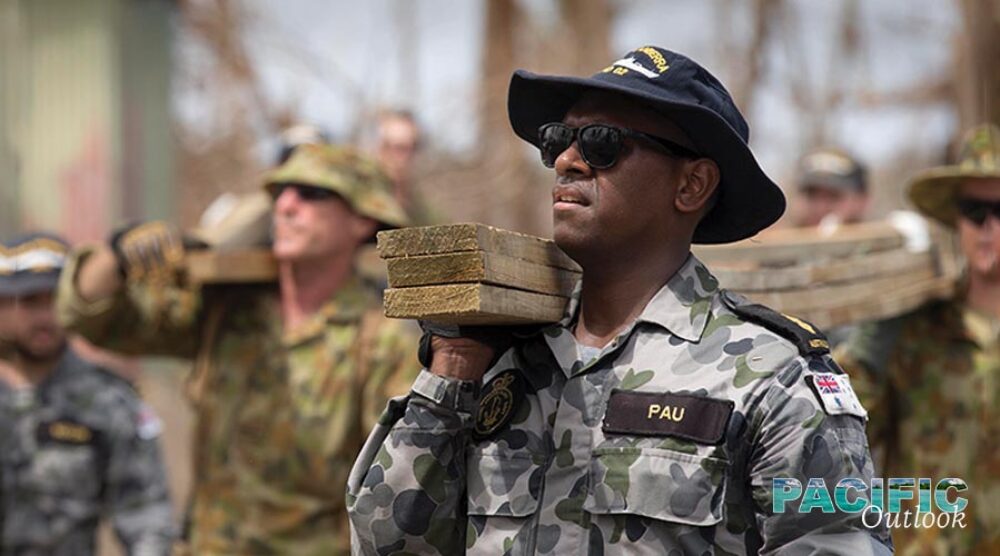The title’s words are those of Mark Binskin, Chair of the recent Australian Royal Commission into National Natural Disaster Arrangements. They underline that, given today’s unprecedented problems, countries need to sharply improve their responses to crises and disasters. Part of this involves being better prepared, and here the idea of mobilisation is useful. National mobilisation involves using a society’s resources to meet the demands arising from conflict, competition, crisis or disaster. This new GAI publication addresses the issues involved.
Preparedness in general, and mobilisation in particular, is a very important issue for the Asia-Pacific, and especially Oceania. In 2020, about 40% of the natural disaster events worldwide occurred in the Asia-Pacific region, not including the pandemic that affected all globally. Indonesia stands out suffering 18% of the region’s disasters last year, with Vietnam and India next with 7% each. Worryingly, looking to the future the UN assesses that ‘the disaster risk gap between the Asia-Pacific region and the rest of the world is growing’. This was also the deduction of Australia’s natural disaster royal commission which declared ‘what was unprecedented is now our future’.
Within the Asia-Pacific region, the South Pacific stands out as really worrying. The latest World Risk Index ranks the Oceania region at greatest disaster risk worldwide. Indeed, of 181 countries assessed globally, Vanuatu is the country with the highest disaster risk. In Oceania, then comes Tonga (second), Solomon Islands (fifth), Papua New Guinea (eighth), Fiji (fifteenth) and Kiribati (eighteenth).
Planning for mobilisations makes them much more effective when they are needed to meet the demands of disasters and crises. However, such planning is inherently difficult as the future is uncertain. In the Australian case for example, there are many different problems for which mobilisations might be undertaken, ranging from national security worries of major and minor wars, to human security issues of bushfires, floods, cyclones and pandemics. Adding to the difficulties, the scale of future problems is unknown. Australia’s climate projections suggest multiple problems will occur simultaneously in the future, seriously worrying security thinkers like the ASLCG.
Conceptually, national mobilisation problems involve using one of four different problem solving methodologies: strategy, risk management, resilience and opportunism. Strategy is agency driven and involves purposefully taking actions to try to shape the future in some way; an example is Australia’s Pacific Step Up. Risk management is event driven and aims to reduce the damage arising from a foreseen, potential event if it transpires; an example is bushfires. Resilience is also event driven but aims to absorb the shock of an event and then expedite recovery; an example is post-cyclone recovery. Opportunism is again event driven and aims to take actions that exploit a window of opportunity, as in Australia’s response to the 2011 Japanese earthquake. The mobilisation response needed in each is fundamentally different.
A way to work around the problem of uncertainty and different mobilisation concepts is to find commonalities and invest in strengthening those. A major commonality central to all mobilisations is people. Material resources are also generically common, but of such diversity as to be generally specific to the context of each particular mobilisation.
Australia has historically always been short of people during periods of mobilisation. Papua New Guinea however has a large and fast-growing population, some now part of Australia’s agricultural workforce. The growing demand for both countries to undertake Humanitarian And Disaster Relief operations (HADR) suggests that Australia and Papua New Guinea could work together to improve regional resilience against natural disasters. Others, such as Fiji, could also be involved but in population terms Papua New Guinea is the Pacific Island giant.
This concept envisages adding to the Australian Defence Force an additional 5000 personnel dedicated solely to undertaking HADR tasks on a full-time basis. Perhaps, about half of these could be Pacific Islanders. This size HADR element would allow for training and overlapping deployments.
Such a combined standing force would be continually busy and costly. A quick analysis suggests costs of about $2 billion annually, around 5% of the Australian defence budget. Arguably, the current part-time HADR approach is also costly while imposing high opportunity costs in preventing military personnel undertaking warfighting training. With a HADR element, the remaining almost 60,000 personnel in the Australian Defence Force would be re-dedicated solely to warfighting and thus national security.
There are reasonable arguments that such a HADR force need not be military. However, if it was, it could leverage off existing training and support arrangements to a considerable amount. Being part of the Australian Defence Force would give more HADR bang for the buck.
There are also arguments advanced about the potential issues involving Pacific islanders being part of the Australian Defence Force but not Australian citizens. These arguments assume a warfighting role and thus non-Australian citizens making war as dictated by the Australian government. Quite reasonably, Pacific island governments would have real concerns about assigning their nationals to be on-call for any and all future conflicts Australia may be involved in. Having a dedicated regional HADR role removes such concerns.
In these unprecedented times, we might need some unprecedented solutions. It’s time to get serious about mobilisation and being prepared.
Dr Peter Layton is a Visiting Fellow at the Griffith Asia Institute, Griffith University, and an Associate Fellow at the Royal United Services Institute.
The paper ‘Being prepared for unprecedented times’ has been developed with the support of the Directorate of Mobilisation, Force Design Division within the Australian Department of Defence. Mobilisation involves civil society, emergency services and all levels of government. The sharing of the research undertaken aims to encourage informed community debate.








